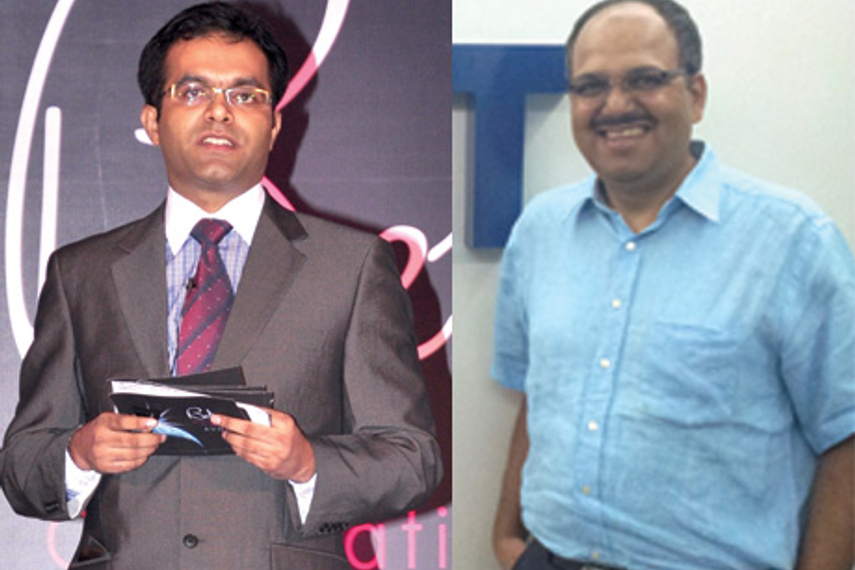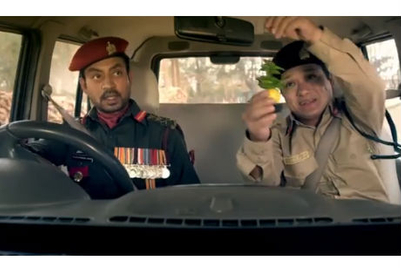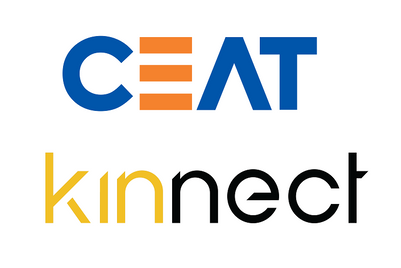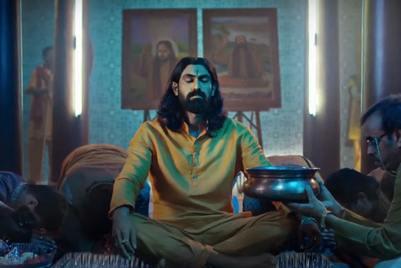
How much does each segment of tyres contribute to Ceat’s overall sales in India? What’s the split between sales in India and abroad?
Nitish Bajaj (NB): A broad classification is commercial and passenger. Roughly 65 to 70 per cent will be commercial and the balance will be passenger. Within that if you have to split, we are pretty strong in motorcycles (number two player) and growing fast in the cars segment. In the commercial segment, we’re strong across the truck buyers. Our share in the motorcycle segment is 23 per cent.
Prabhakar Tiwari (PT): Our turnover is around Rs 5,000 crores out of which around Rs 1,000 crores would be coming from exports.
In the Indian market (for car tyres), we have Bridgestone at the top end? And we have MRF, Ceat and others from India. How are they priced (how would you segment the category)? What is Ceat’s positioning on price? How important is price in the segment?
NB: If you look at the two wheeler market, MRF is the leader. We used to be a number three player, but we’ve now overtaken TVS in the replacement market (where the consumer chooses on his own). We’re a strong number two with a market share of 23 per cent, about 10 behind the leader.
If you look at the consumer’s choice, he first needs to have trust in the brand. Trust comes from what is fitted on your bike as that provides an experience. The consumer looks at what’s on the bike already when it comes to changing tyres. You make deals with auto majors and that’s how you get your tyres fitted in the first stage.
The second way of building trust is other user’s experience so when you have to change tyres you ask your friends, peers and mechanics.
The third way of building trust is the media as anything that is visible is also gradually building trust and credibility in the mind.
People also do a search on the internet before going into a shop. The youth is also driven by new patterns and aesthetics.
So people enter a shop and ask for the three to four brands they’re familiar with. The dealer will showcase his options before the user looks at brand credibility, pricing and influencers’ messages to make his choice.
PT: The price varies. Bridgestone is able to command a certain premium, but there are places where Ceat is priced higher than competition.
NB: You really can’t compare on the basis of price. We’ll be available cheaper than Bridgestone in some categories, while in the rest we’ll be above or on par. The key point here is that Bridgestone had a very strong presence in the industry as they came company-fitted in the car. That’s what helped them build credibility. Their growth in the country wasn’t due to advertising but their association with the automobile industry.
And in four wheeler tyres who’s your major competition?
NB: In four wheelers, Bridgestone and MRF lead for PCR (Passenger Car Radials). We don’t have any research on the same in our industry but that’s the rough estimate. We are possibly between number four to five here.
The reason for us lacking here is because if you see the history, Ceat wasn’t very present in the passenger segment. In fact at one point we were totally out of it. We have been present majorly in the SUV segment. We’ve had a dedicated campaign running for this segment and that’s helped us increase traction. Today, we’ll be standing at a six per cent share of the total passenger car segment and 13 to 14 percent in the SUV segment.
Now, we have a full range of tyres and are looking to launch new patterns which will in turn accelerate growth.
What is the role of advertising in the category? Is it more for influencers than end-consumers? Who makes the end-purchase decision today in the different consumer (tyre) categories?
NB: Our campaign ‘The road is full of idiots’, which is built around grip (safe, secure ride), has established that Ceat Tyres gives you that safety and assurance to be able to ride pleasurably and be in control. That’s worked beautifully and it’s helped us almost double our market share in the three and a half years it’s been running for.
If you look at the passenger segment, you need to make sure that the dealer is positively convinced about your product. So, we give assurances to dealers, an example of this is our warranty scheme for two wheeler tyres. That gives huge confidence to the dealer and is like a stamp of authority and the dealer can convey that to the end consumer.
PT: The segment is basically males. So, our campaigns towards the dealer and the end consumer could be the same. So we target news channels and shows like KBC. We send dealers to the studio to view KBC, for example.
NB: We look at dealer engagements programmes to keep them positively influenced - he’s also one of the influencers. The positioning isn’t very important for him, but the fact that the tyre has good quality and a superior grip is important. He needs to reinforce that to the consumers and from that perspective we do have an association and engagement programme.
‘Born Tough’ is a statement one readily relates with Ceat. Can you explain how that positioning was arrived at, and what the market conditions were then?
PT: We used that statement until 2000. It was during an era when the media fragmentation wasn’t very high and that’s why there’s huge recall for it. What we realised that it was high on saliency but low on deliverance. That’s because roads have changed and people are used to more comfortable vehicles. That’s why in 2006 we conducted a huge study and realised that we have to change our image. We let go of the rhino as our emblem and became more consumer-oriented.
The latest communication, for the monsoons (for two wheelers): Is there a seasonal spike in sales that the consumer tyres categories witness?
PT: Quarter one (April to June) is the time when sales increases. The reason for this is that multiple punctures can occur during the summers and tyre bursts are also caused. People also look to prepare for the monsoons. We looked to see if there’s an opportunity in that.
NB: It probably wasn’t a high season before, but we did the campaign and we found that it works very well. We’re sensitising people at a time that they’re already sensitive. So safety and grip, which is one key feature, has a very high relevance during the monsoons. So, we brought those two things together and it worked beautifully for us. Typically the summers are the peak, but the monsoon campaign helped us continue with the sales during the rainy season.
PT: Additionally, we realised that our brand is amazing during the wet condition. Monsoon is an acid test as to when it comes to grip on the road. The brand performs better at that time, and so we looked to leverage that.
Most tyre shops are multi-brand outlets. How does Ceat push sales for dealers? Are there exclusive stores or are there plans for exclusive stores?
NB: Ceat was the pioneer in introducing a dedicated a Ceat Shoppe concept. It was an exclusive branded retail outlet. However, over a period of time it lost steam and then came the multi-brand outlet. Then also came the stage where people started having distinctive presence in a multi-brand outlets. People also started looking at opening their own dedicated stores (MRF possibly at some stage went ahead of us). Now, that (dedicated retail outlets) is a high thrust area and in our expansion plans we are putting a lot of effort in expanding our Ceat Shoppe universe. As we stand, we have about 100-odd outlets that are exclusive to us.
And how are the outlets spread across geographies?
NB: It’s largely urban. It will get into rural over a period of time. For now, people (in rural) come to the nearby city or small town for changing of tyres.
So, don’t you see that as an opportunity?
NB: Yes, but today the larger market still lies in the urban areas. Rural will grow over a period of time.
PT: People come to big towns for work or a fortnightly visit. It’s a hub-and-spoke model from our understanding. The small town acts as a hub with the small villages being the spokes.
NB: Tyres are not a daily purchase. People change tyres once in two or three years or even longer in some cases. So a small village will not have a standalone market to afford a retail outlet. Eighty five to 90 per cent of our sales are urban areas.
PT: Distribution is very dealer-led. We have three channels - Ceat Shoppe, distributor channel and dealer channels. The coverage varies, but in terms of direction we are more towards the tier 1 cities.
What are the spends across mediums? Is digital growing in this category too?
NB: This is an evolving situation. When we started, it was predominantly television. Now, we’re going more multi-dimensional. Our ‘monsoon smart’ campaign was very well integrated with the digital space. TV was earlier 70 per cent with the balance being BTL. Now, it’s 50 per cent on TV, 35 per cent on BTL and 15 per cent goes into other mediums which consist of print, digital and radio.
Similarly we did the ‘MTV Chase the Monsoon’ campaign which was very digital focused.
PT: For the campaign, there were quite a few innovations used. An example of that would be that for the first time we used Whatsapp as a voting medium instead of paid SMS. We got 90,000 votes through this. We also used hashtags on Facebook and Instagram videos. We focused on social currency in this campaign. Our teams were riding from Puducherry to Mumbai and we were allocating currency to the teams based on the number of likes they were getting on social media.
The last campaign saw sales increase during the monsoons. Does that mean advertising in this category is as important as it is across others?
NB: If I have to talk about pure consumer categories like FMCG, where it’s only about advertising, we can’t compare. Here, there are multiple variables out of which advertising is just one. The fact remains that you need to have dealers and influencers on your side. For those reasons, I’ll say it’s a tougher job to advertise in this category because you have to keep three to four elements aligned to your key task.
PT: Whatever we supply at the moment, we have to also prepare for replacement demand two to three years later. So, that’s also like a marketing expense.
NB: You have to get your equation right with automobile majors, dealers, influencers (mechanics, friends); the communication needs to get yourself into the consideration set.


.jpg&h=334&w=500&q=100&v=20250320&c=1)
.jpg&h=334&w=500&q=100&v=20250320&c=1)

.jpg&h=334&w=500&q=100&v=20250320&c=1)


.jpg&h=334&w=500&q=100&v=20250320&c=1)




_20221209044119.png&h=268&w=401&q=100&v=20250320&c=1)


.jpg&h=268&w=401&q=100&v=20250320&c=1)
.png&h=268&w=401&q=100&v=20250320&c=1)


